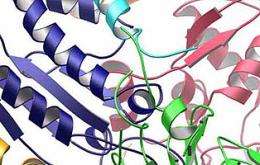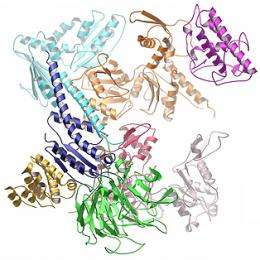In a Chemical Library, Yale Researchers Finds Keys to Cell Movement

(PhysOrg.com) -- Rummaging through a biotechnology company’s chemical closet, Yale University researchers found two molecules that will allow scientists to better study how cells move.
The study in the journal Nature, published online Aug. 2, describes how two small molecules discovered by Cytokinetics Inc. block the action of a key complex that directs the assembly of actin filaments, which produce the force to help cells move. The target of these inhibitors is the Arp2/3 complex, a cellular component so vital that cells die without it. This dependence has made it challenging to learn exactly which cellular processes depend upon the complex.

Thomas Pollard, senior author the study and Sterling Professor of Molecular, Cellular & Developmental Biology, said that the inhibitors will allow scientists to turn the complex off and on, helping shed light on the mechanism of cell movement. Pollard noted that cell biologists “desperately need these tools to switch Arp2/3 complex off reversibly without killing the cells.” These inhibitors should help scientists determine how nerve cells grow processes to wire the nervous system, embryonic cells migrate to form organs and white blood cells find bacteria.
Although the molecules were not useful to Cytokinetics as drug candidates, they are of great scientific interest to biological researchers who study the movement of cells. Pollard’s team determined the crystal structures showing where both of the molecules lodge to block the action of Arp2/3 complex.
Pollard serves on the Scientific Advisory Board of Cytokinetics, which found the inhibitors and collaborated on the project. Other Yale authors on the paper include Bradley Nolen, the co-lead author, and CD McCormick.
Cytokinetics Inc. and the National Institutes of Health funded the study.
Provided by Yale University (news : web)















